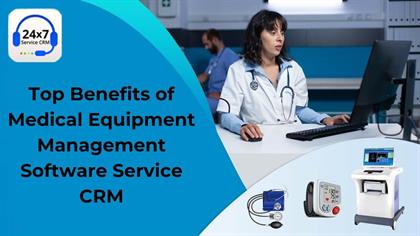

Implementing a preventive maintenance management plan is essential for businesses seeking to optimize their maintenance processes, reduce downtime, and extend the lifespan of their assets.
By leveraging advanced technology solutions such as Preventive Maintenance Software, businesses can streamline and automate their preventive maintenance activities.

5 Steps to Implement a Preventive Maintenance Management Plan
In this article, we will outline five key steps to successfully implement a preventive maintenance management plan and highlight the benefits of utilizing preventive maintenance software.
Step 1: Assess Current Maintenance Practices
The first step in implementing a preventive maintenance management plan is to assess the current maintenance practices within your organization.
Evaluate the existing maintenance processes, identify areas for improvement, and determine the scope of your preventive maintenance program. This assessment involves reviewing maintenance records, analyzing equipment failure patterns, and understanding the maintenance requirements of your assets.
By conducting a thorough assessment, you can identify critical assets that require preventive maintenance, determine the appropriate maintenance intervals, and establish performance benchmarks for future evaluation.
Step 2: Define Maintenance Tasks and Intervals
Once you have assessed your current maintenance practices, the next step is to define the specific maintenance tasks and intervals for each asset.
This involves creating a comprehensive list of preventive maintenance tasks, such as inspections, lubrication, calibration, and component replacements.
Consider the manufacturer's recommendations, industry best practices, and regulatory requirements when defining maintenance tasks and intervals. By establishing clear guidelines for preventive maintenance, you can ensure consistency and optimize the performance of your assets.
Step 3: Implement Preventive Maintenance Software
To streamline and automate your preventive maintenance management plan, it is crucial to implement preventive maintenance software. Preventive Maintenance Scheduling Software offers a centralized platform where you can manage all aspects of your maintenance program.
It enables you to schedule maintenance tasks, track work orders, generate maintenance reports, and maintain a comprehensive maintenance history.
By leveraging Preventive Maintenance Scheduling Software, businesses can eliminate manual processes, reduce paperwork, and improve data accuracy. The software provides real-time visibility into maintenance activities, allowing you to monitor asset performance, track maintenance costs, and make informed decisions.
Step 4: Train and Engage Maintenance Team
Implementing a preventive maintenance management plan requires the collaboration and engagement of your maintenance team.
It is essential to provide comprehensive training to your team members on the use of Preventive Maintenance Software, as well as the specific maintenance tasks and intervals defined in the plan.
Empower your maintenance team to take ownership of their assigned tasks, encourage open communication, and foster a culture of continuous improvement.
Regularly review the performance of the preventive maintenance program, address any challenges or concerns, and provide feedback to ensure its successful implementation.
Step 5: Evaluate and Optimize
The final step in implementing a preventive maintenance management plan is to regularly evaluate and optimize the program. Monitor key performance indicators (KPIs) such as equipment uptime, maintenance costs, and asset lifespan to assess the effectiveness of your preventive maintenance efforts.
Utilize the reporting and analytics capabilities of Preventive Maintenance Software to gain insights into maintenance trends, identify areas for improvement, and make data-driven decisions. Continuously optimize your preventive maintenance plan based on these evaluations, adjusting maintenance intervals, tasks, and resource allocation as necessary.
Benefits of Utilizing Maintenance Management Software
Implementing a preventive maintenance management plan with the support of Maintenance Management Software offers several benefits to businesses:
Increased Equipment Reliability and Availability
By proactively addressing maintenance needs through preventive measures, businesses can enhance equipment reliability and availability.
Preventive maintenance helps identify and resolve potential issues before they escalate into costly breakdowns or unplanned downtime. This proactive approach improves asset performance, reduces the risk of failures, and maximizes equipment uptime.
Cost Savings
Effective Preventive Maintenance Management Software leads to significant cost savings for businesses.
By addressing maintenance needs in a planned and systematic manner, businesses can avoid expensive repairs and minimize equipment replacement costs. Preventive maintenance also reduces the likelihood of production disruptions, which can result in lost revenue.
Additionally, Preventive Maintenance Management Software allows businesses to optimize maintenance schedules, allocate resources efficiently, and reduce overall maintenance costs.
Extended Asset Lifespan
Properly implemented preventive maintenance programs help extend the lifespan of assets.
By regularly inspecting, cleaning, and maintaining equipment, businesses can mitigate wear and tear, prevent premature failures, and extend the operational life of their assets. This not only reduces capital expenditures on new equipment but also maximizes the return on investment (ROI) for existing assets.
Enhanced Safety and Compliance
Preventive maintenance contributes to enhanced safety and compliance within the organization. Regular inspections and maintenance tasks help identify potential safety hazards and ensure that equipment meets regulatory requirements.
By adhering to preventive maintenance practices, businesses can create a safer working environment, reduce the risk of accidents, and maintain compliance with industry standards and regulations.
Improved Productivity and Operational Efficiency
Efficient preventive maintenance management improves overall productivity and operational efficiency. By reducing unplanned downtime and equipment failures, businesses can maintain smooth operations and minimize disruptions.
This allows employees to focus on their core responsibilities, meet production targets, and deliver products or services on time. The streamlined processes and automated workflows provided by Preventive Maintenance Software further enhance productivity by eliminating manual tasks and improving work order management.
Streamlined Communication and Collaboration
Preventive Maintenance Software facilitates streamlined communication and collaboration among maintenance teams and other stakeholders.
The software provides a centralized platform where team members can access maintenance schedules, update work orders, and communicate progress or issues in real-time.
This improves coordination, reduces miscommunication, and enables faster resolution of maintenance-related issues. Additionally, Preventive Maintenance Software allows for the attachment of documents, such as equipment manuals or inspection checklists, ensuring that relevant information is readily available to the team.
Data-Driven Decision Making
Implementing a preventive maintenance management plan supported by Preventive Maintenance Software enables businesses to make data-driven decisions. The software collects and analyzes maintenance data, generating valuable insights and performance metrics. Businesses can leverage these insights to identify trends, track key performance indicators, and identify areas for improvement. By utilizing the data and analytics capabilities of Preventive Maintenance Software, businesses can continuously refine their maintenance strategies, optimize resource allocation, and align maintenance activities with organizational goals.
Regulatory Compliance and Auditing
In industries with stringent regulatory requirements, maintaining compliance is critical. Preventive Maintenance Software helps businesses adhere to regulatory standards by providing a robust framework for documenting and tracking maintenance activities.
The software allows for the recording of maintenance tasks, inspections, and compliance checks, ensuring that businesses have a comprehensive audit trail.
This facilitates the preparation of compliance reports and simplifies the auditing process, providing businesses with the necessary documentation to demonstrate adherence to regulatory requirements.
Integration with Other Systems
Preventive Maintenance Software can integrate seamlessly with other systems, such as Enterprise Resource Planning (ERP) software or Asset Management Systems. This integration allows for the exchange of data and information, eliminating the need for duplicate data entry and improving data accuracy.
For example, integrating Preventive Maintenance Software with an ERP system can enable automatic updates of maintenance-related costs and inventory levels. This integration streamlines processes, enhances data integrity, and provides a holistic view of asset management and maintenance activities across the organization.
Continuous Improvement
A preventive maintenance management plan is not a one-time implementation; it requires continuous improvement and refinement. Preventive Maintenance Software supports this continuous improvement by providing performance metrics and insights into maintenance activities.
By regularly reviewing these metrics and analyzing trends, businesses can identify areas for optimization, identify opportunities for process improvement, and implement corrective actions.
This iterative approach ensures that the preventive maintenance management plan evolves with the changing needs of the organization and leads to ongoing improvements in maintenance effectiveness and efficiency.
Conclusion
In conclusion, Implementing a preventive maintenance management plan is a strategic initiative for businesses seeking to optimize their maintenance processes and maximize the lifespan of their assets.
By following the five steps outlined in this article, businesses can establish a proactive approach to maintenance, streamline their processes. And reap the benefits of increased equipment reliability, cost savings, extended asset lifespan, enhanced safety and compliance, and improved productivity.
Leveraging the capabilities of Customer support management software further enhances the effectiveness and efficiency of Preventive Maintenance Software programs, enabling businesses to achieve long-term success in their maintenance endeavors.
Leave a Reply
Related Products
You Might Like Also

Manage medical equipment efficiently with CRM Software, streamlining maintenance schedules, tracking inventory, and optimizing resources for better healthcare delivery. Read More

Unlock the benefits of a field service management app: streamline operations, boost productivity, and enhance customer satisfaction with Service CRM. Read More

Elevator Maintenance Software Service CRM plays a crucial role in business operations by streamlining maintenance tasks, optimizing service schedules, and ensuring elevator safety and performance, thus enhancing operational efficiency and reliability. Read More

Explore how leveraging AMC Management Software Service CRM optimizes contract management processes, ensuring seamless administration, accurate tracking, and enhanced client satisfaction. With features like automated renewals, customizable alerts, and comprehensive reporting, businesses can efficiently manage contracts, minimize errors, and foster stronger client relationships. Read More

How Is HVAC Field Service Software Transforming the AC Service Industry?
HVAC Service Management Software may facilitate the management of client data, technician monitoring, appointment scheduling, and other aspects of running a profitable company. Read More














